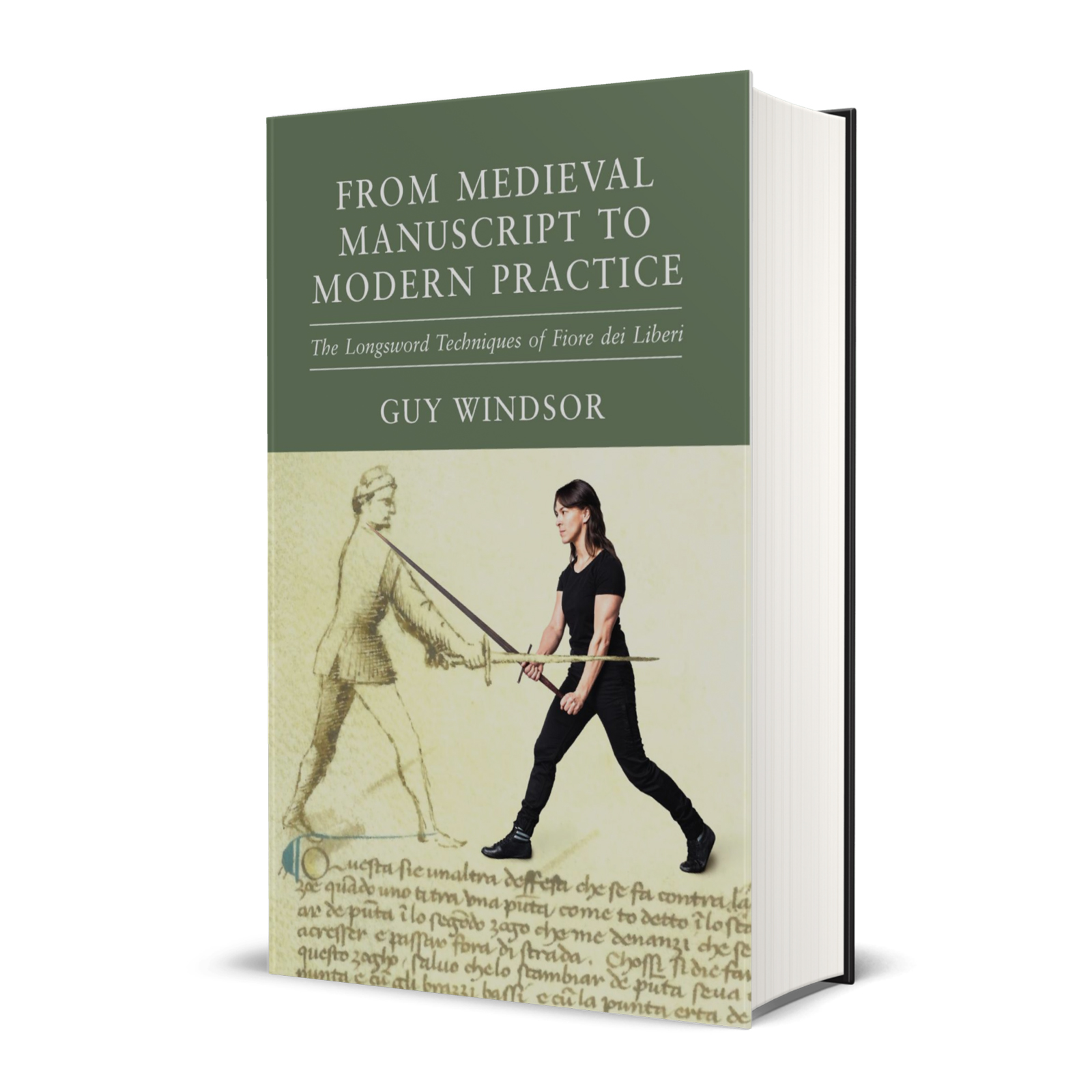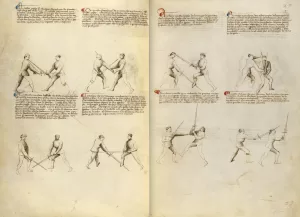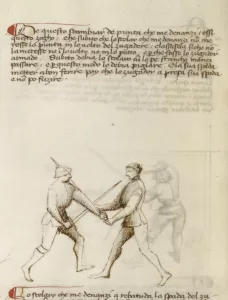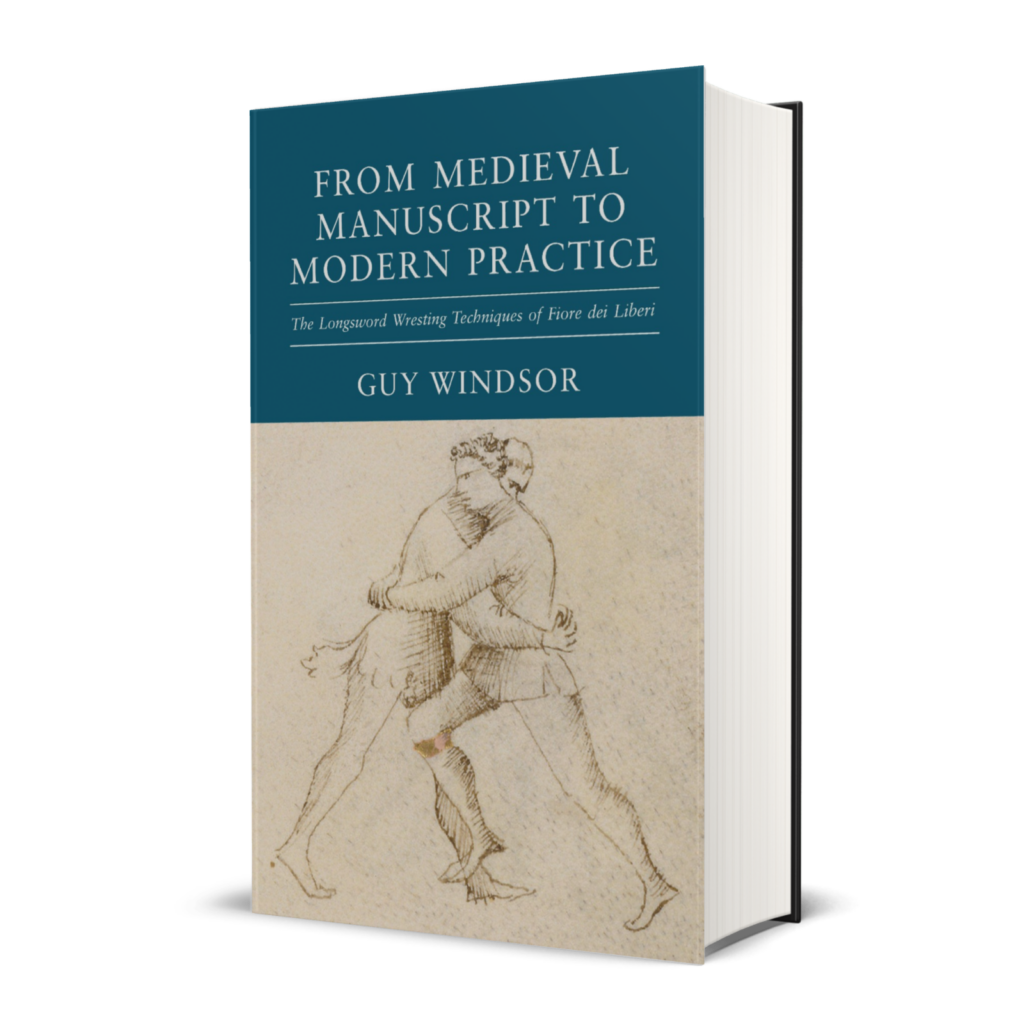
Weapon
Difficulty level
From Medieval Manuscript to Modern Practice: The Longsword Techniques of Fiore dei Liberi
By Guy Windsor
In From Medieval Manuscript to Modern Practice, renowned historical swordsman Guy Windsor demystifies one of the greatest martial arts books of all time, Fiore dei Liberi’s Il Fior di Battaglia (The Flower of Battle).
In the late 14th century dei Liberi, an Italian knightly combat master, wrote Il Fior di Battaglia (The Flower of Battle). This magnificent, illustrated manuscript described how to fight on foot and on horseback, in armour and without, with sword, spear, pollax, dagger, or with no weapon at all.
Windsor spent the last twenty years studying Fiore’s work and creating a modern practice of historical swordsmanship from it.
In this book, Windsor takes you through all of Fiore’s longsword techniques on foot without armour. Each technique (or “play”) is shown with the drawing from the treatise, Windsor’s transcription and translation of the text, his commentary on how it fits into the system and works in practice, and a link to a video of the technique in action. The book also contains a detailed introduction describing Fiore’s life and times, and extensive discussion of the contexts in which Fiore’s art belongs.
From Medieval Manuscript to Modern Practice is essential reading for all martial artists and historians of the medieval and early Renaissance.
BUY DIRECT FROM GUY AT THE SWORDSCHOOL SHOP: CLICK HERE
You can find my books at all the usual online retailers. However, it really helps me if you buy direct through the Swordschool shop. You can also ask your local library or bookstore to order a copy for you.
Share this with someone:
Below is a sample, describing the technique shown in the cover art (which shows Siobhan Richardson photographed by Dahlia Katz, superimposed on Fiore’s manuscript):
The Exchange of Thrusts: Plays Nine and Ten
Having kicked our opponent in the groin, we turn the page to see this spread:

Note, this image is not a photograph of the manuscript opened up; I have just put the scans of each page next to each other. The story is the same though; having dealt with a whole lot of cuts, including (if you’ll indulge me a moment) too hard, too low, and the regular kind, we now deal with thrusts. The first, and probably ideal, response is to exchange the thrust.
Questo zogho si chiama scambiar de punta e se fa per tal modo zoe. Quando uno te tra una punta subito acresse lo tuo pe ch’e denanci fora de strada e cum l’altro pe passa ala traversa anchora fora di strada traversando la sua spada cum cum gli toi brazzi bassi e cum la punta de la tua spada erta in lo volto o in lo petto com’e depento.
This play is called the exchange of thrust, and it is done like this, thus. When one strikes a thrust at you immediately advance your foot that is in front out of the way and with the other foot pass also out of the way, crossing his sword with with your arms low and with the point of your sword up in the face or in the chest as is pictured.
Note the repeated cum, ‘with’. A common scribal error. Not secret messages from beyond the grave, ok? The instructions couldn’t be clearer, could they?
Rapier fencers will of course be delighted to see the classic thrust in opposition done with longswords, though one should take care to make the crossing thoroughly, and not race to get the point in. At the end of the zogho largo section, on folio 27v, Fiore wrote:
Qui finisse zogho largo dela spada a doy mani, che sono zoghi uniti gli quali ano zoghi, zoe rimedii e contrarie da parte dritta e de parte riversa. E contrapunte e contratagli de zaschuna rasone cum roture coverte ferire e ligadure, che tutte queste chose lizerissimamente se porio intendere.
Here ends the wide play of the sword in two hands, that are plays together, which plays are: remedies, and counters from the forehand and the backhand side, and counterthrusts and countercuts of every type, with breaks, covers, strikes and binds, that all these things can be very easily understood.
I’ll discuss this translation in more depth later (there is a lot to discuss), but for now, just notice the contrapunte, counterthrust. As I see it, this refers to the exchange of thrusts. That Fiore also mentions (but as far as I can see does not show) countercuts, suggests that the lesson of this play can legitimately be applied to countering a cut with a cut.
At this stage we should remember that Fiore loves us and wants us to be happy. He understands that sometimes one might miss a stroke, and that’s OK. Because this action continues in the tenth play:
De questo scambiar de punta ch’e me denanzi, essi questo zogho, che subito che lo scholar ch’e me denanzi non mettesse la punta in lo volto del zugadore, e lassasela si che non la metesse ne in lo volto ne in lo petto, e per che fosse lo zugadore armado, subito debia lo scolaro cum lo pe stancho inanci passare, e per questo modo lo debia piglare. E la sua spada metter a bon ferire poy che lo zugador apresa sua spada e non po fuzire.
From this exchange of thrust that is before me, comes this play, that immediately that the scholar that is before me does not place the thrust in the player’s face, and leaves it such that he doesn’t place it neither in the face nor the chest, and because perhaps the player was in armour, the scholar must immediately pass forwards with the left foot, and in this way must grab. And put his sword to work with good strikes, because the player’s sword has been grabbed and he cannot get away.
So having missed our thrust, perhaps because the opponent is in armour, we pass again, grabbing the sword and striking. In practice I always teach these plays together, and you should continue with the grab whether you hit the face with the exchange or not. That way if you do miss, you’ll continue without pause.
- Other Books from From Medieval Manuscript to Modern Practice



